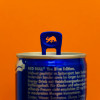The missing link in the pathway that endows poppies with the ability to make morphine has been uncovered by scientists in the UK and Australia.
Morphine is one of the world's most powerful painkillers and also the most popular. Last year, together with its other opioid relatives, global sales of the agent topped US$11.6 billion. But what surprises many people is that, despite two centuries of biochemical effort to unpick the plant chemistry used to make morphine, the opium poppy itself remains the mainstay of morphine production.
Last year, together with its other opioid relatives, global sales of the agent topped US$11.6 billion. But what surprises many people is that, despite two centuries of biochemical effort to unpick the plant chemistry used to make morphine, the opium poppy itself remains the mainstay of morphine production.
Tasmania, Australia, is a major site of cultivation. "The yields are incredible," says York plant scientist Ian Graham who has been collaborating with the pharmaceutical company GlaxoSmithKline. "A football pitch-sized field will return over 50 kilograms!"
However, thanks to a new breakthrough announced this week in the journal Science, it might be possible to optimise that yield yet further and also to manipulate poppies to produce other chemicals with useful clinical properties, including anti-cancer agents. "Over the last 20 years a lot of the biochemistry of how the opium poppy makes morphine has been worked out," says Graham. "But there was one missing part of the puzzle that was preventing people from pursuing this. Now we've found it."
By studying mutant poppy plants that couldn't make morphine, Graham and his colleagues were able to follow the production line running inside the plants to spot where the hold-ups were in the mutants. They spotted a build-up of a chemical that is a precursor for morphine synthesis. Reasoning that the chemical was accumulating because an enzyme that should be acting upon it was disabled in their mutants, they screened the plants' genomes looking for changes that would explain the enzyme deficiency.
What they discovered was a surprise: more than a million years back in evolution, they speculate, a genetic mix-up in the opium poppy led to two genes becoming fused together. So rather than two separate genes existing, one producing the chemical equivalent of a hammer the other a molecular chisel, the two joined together to produce a hybrid hammer-chisel.
The team refer to the fusion gene as STORR, because it converts the starting material S-reticuline to its mirror image R-reticuline, which is the critical ingredient for making morphine. Converting between these two forms of reticuline involves generating highly unstable intermediate chemicals, which would normally fall apart before an appreciable amount of R-reticuline could be produced.
But having the two chemical tools that do the job linked together by this fusion process means that the unstable intermediates can be handed on safely from one part of the molecule to the other, resulting in a much higher yield. "This is the missing part of the pathway," says Graham. "And it means we can use this to breed improved poppy strains."
There is another side to the discovery too. The elucidation of the biochemical pathway for making morphine means that it can be transferred to organisms like yeast, potentially enabling anyone with a home brew kit and some biochemical know-how to make morphine at home. "It's not easy, but it would be possible now," acknowledges Graham.










Comments
Add a comment